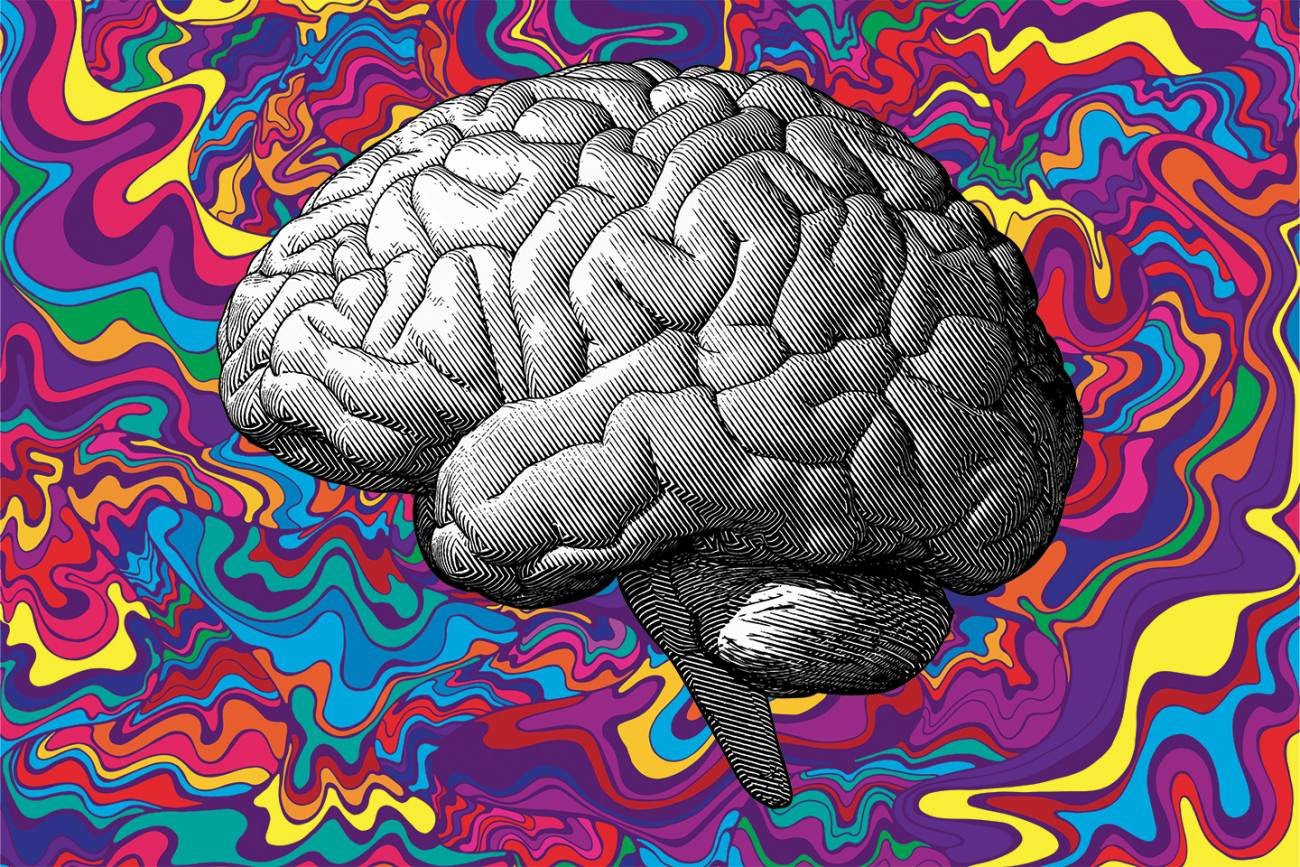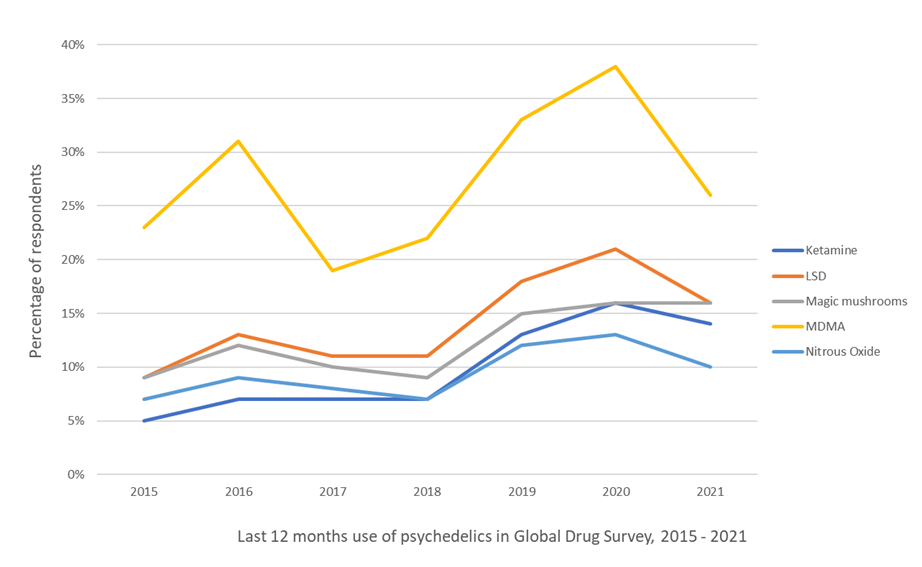
ALTERED STATES: WHERE DO WE DRAW THE LINE WITH PSYCHEDELIC-ASSISTED THERAPY?
JACK COLCHESTER & HARRY GUILD
23/02/2018
It took the industry more than a month to respond to one of 2017’s biggest cultural moments because we, as a profession, aren’t paying attention where it matters. Here Jack Colchester, Senior Data Strategist and Deputy Editor of BBH Labs & Harry Guild, Data Strategist at BBH, outline how the processes driving internet culture can create global fame.
Psychedelics (such as LSD, psilocybin, ketamine, and MDMA) are being heralded as the new ‘cure-all’ for a range of mental health problems. From major depressive disorder to tobacco addiction and, seemingly, everything in between. But with the list of indications ever-expanding, where do we draw the line?
As health marketeers, we have a responsibility to frame public discourse and shape societal attitudes to these bigger questions.
The reality is that many mental health conditions fall along a spectrum. What level of anxiety disorder warrants the use of these kinds of interventions? And who’s to say who receives them – a medical professional or the individual? While there’s undoubtedly a line that needs to be drawn between recreational and therapeutic use, that line is becoming increasingly blurred. With many users reporting improved well-being, cognitive function, and creativity, should we also be looking to them as means to expand our minds, rather than purely to treat them?
Do we, in fact, have a responsibility to harness the mind-altering potential of these chemicals in order to combat our own negative thinking, enhance our well-being, or even improve our creative firepower?
In a world where many people already take daily vitamins to improve our health and immunity, it’s not so much of a leap to imagine a future where psychedelics are widely embraced as a means to help us perform better in our own lives.
Already, these drugs are creeping out of the mental health space and into universities, wellness centres, and venture funds. And it’s not only psychedelic-assisted therapy that’s being embraced but also microdosing (ingesting small amounts of these substances). The theory behind microdosing is that it opens up some of the channels that give way to more creative thinking and mood improvement, without the full-on trip that you’d typically experience at higher doses. It’s a term not alien to Gen Z and Millenials: half of young people have heard of it and more than a third say they’re interested in trying it if it helps their mental health or overall well-being.
While the jury is still out on whether or not the positive results seen with microdosing are actually due to a drug effect, it’s thought that by changing unhelpfully rigid thought patterns and behaviours, high (or low) doses of psychedelics could help with things like resilience, stress, and anxious thinking that many of us struggle with every day. Ongoing research is looking at disorders of eating, substance use, and obsessive compulsive behaviours – all problems that commonly begin or peak in adolescence. Faced with both a stressed-out society that’s increasingly obsessed with wellness and a rising number of young people reporting mental health problems, medical and marketing need to work together to guide public opinion on the time and place for psychedelic-assisted therapy.
But first, we need to know the risks.
What are the long-term effects on the brains of people who go down this therapeutic road, particularly for those brains which are young and still developing? More research is urgently needed before we can even start to get a semblance of an idea. Should we be mandating a threshold for administration way beyond when we might expect the brain’s development to have slowed down? Should we restrict their use to prescription only, or could we potentially allow extremely low doses to be available over the counter? Without knowing things like what dose or what drug works best, and for whom, it’s all ultimately just guesswork.
The reality is that we will have to take a much more individualised approach with these drugs than we’ve been typically used to. It seems only fitting then that they’re coming to the fore at a time when the drive towards personalised healthcare and wellness – like skin care, vitamins, and nutrition – is greater than ever. Alongside a paradigm shift in how we perceive psychedelics, we’re also starting to see a paradigm shift in how we think about and treat diseases.
But there’s still a long way to go. It’s one thing to treat a patient with a diagnosed mental health disorder with these drugs, and entirely another to grant access to ‘healthy’ individuals. Every person’s brain chemistry is so unique that there’s no way of guaranteeing anyone’s safety, even at the trace amounts used in microdosing.
In a world where the scale and range of mental health issues are ever increasing, yet traditional drugs used to treat them are falling short of the mark, we need an antidote that will help us cope through the ‘post’-pandemic years.
For the many psychiatric disorders needing treatments that don’t yet currently exist, psychedelics may hold the key to life-changing medicines. But for others, the consequences could be severe.
So what might this mean for the future makers (and marketers) of these medicines?
Here are three things we can do to help, and not hinder:
1: Be wary of the over-sell
As brand builders, it may go against our DNA – but we must beware the hype, especially in these early days. While scientific consensus shifts to the idea that psychedelics may do more good than harm, the memory of prohibition, ‘bad trips’, and media demonisation still lingers in the minds of the general public. If these drugs are to be truly embraced then they’ll need to prove their therapeutic worth through measurable, quantifiable science – not hyperbole and exaggerated promotion.
2: Be prepared for a backlash
Progress on the medical side invariably raises questions as to the legal status of adult consumption. It would be a mistake to use medical psychedelics as a fast track to open up the recreational market. Such a tactic could un-do the years of hard research and groundwork that has gone into re-establishing their therapeutic benefit – just look at the cannabis industry.
3: Be responsible
Finally, a word of caution. We need to balance a society that’s open to exploring the potential of psychedelics whilst also proceeding conscientiously to ensure their proper use. Until then, we need to do all the research we can to make sure that we face this future armed with the right knowledge to bring these drugs to those who need them most, safely.

